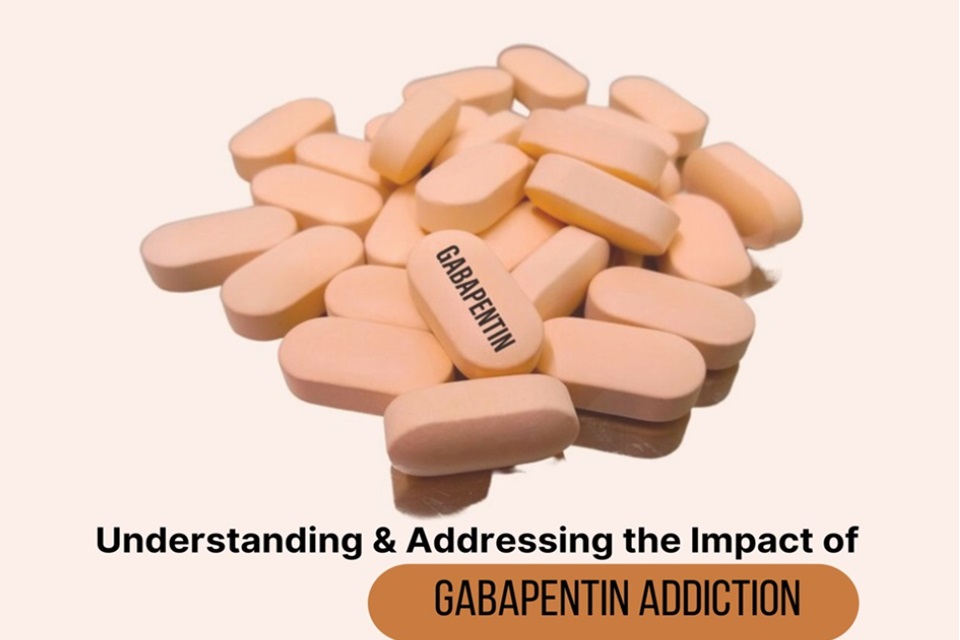Gabapentin, developed initially as an antiepileptic medication, has found widespread use in treating various neurological and pain disorders. However, its growing popularity has raised concerns about its potential for addiction and misuse. In this comprehensive guide, we will learn the uses, side effects, and the complex issue of Gabapentin addiction, with some individuals even stating, “Gabapentin ruined my life.”
Understanding Gabapentin
Gabapentin, also sold under the brand names Neurontin and Gralise, is a medication that affects the nerves and brain chemicals involved in seizures and pain signals. This medication falls within the category of drugs referred to as anticonvulsants or antiepileptic drugs. Gabapentin is primarily prescribed to manage epilepsy, neuropathic pain, and restless leg syndrome. Its mechanism of action involves modulating the activity of certain neurotransmitters in the brain, particularly gamma-aminobutyric acid (GABA), to reduce abnormal electrical activity and dampen pain signals.
Uses:
- Gabapentin is approved by the FDA as an adjunctive therapy for partial seizures in adults and children.
- It is widely prescribed for neuropathic pain conditions such as diabetic neuropathy, postherpetic neuralgia (nerve pain following shingles), and central neuropathic pain.
- Gabapentin is sometimes used off-label to alleviate the discomfort associated with Restless Leg Syndrome (RLS).
- In some cases, Gabapentin may be prescribed off-label to manage anxiety disorders and mood disorders.
Side Effects:
While Gabapentin is generally well-tolerated, it can cause certain side effects, including:
- The most common side effects of Gabapentin are dizziness and drowsiness and can impair one’s ability to drive or operate machinery.
- Some individuals may experience fatigue or weakness, especially when first starting the medication.
- This may also cause gastrointestinal disturbances including nausea, vomiting, diarrhea, or constipation.
- Gabapentin has been associated with weight gain in some individuals.
- Rarely, Gabapentin may cause mood swings, depression, or suicidal thoughts.
Understanding Gabapentin Addiction
While Gabapentin is not considered a controlled substance by the DEA (Drug Enforcement Administration) in the United States, it is increasingly recognized for its potential for misuse and addiction. Gabapentin addiction can develop due to several factors, including:
- Individuals may become psychologically dependent on Gabapentin to cope with pain or anxiety.
- Over time, some individuals may develop tolerance to Gabapentin’s effects, which requires higher doses to achieve the desired effects.
- Gabapentin may be abused in conjunction with other substances, such as opioids or benzodiazepines, to enhance their effects or alleviate withdrawal symptoms.
- Some individuals may misuse Gabapentin for its sedative or euphoric effects.
Symptoms Of Its Addiction:
Recognizing the signs of Gabapentin addiction is crucial for early intervention. Symptoms may include:
- Persistent urges to use Gabapentin, even when not medically necessary.
- Difficulty controlling or limiting Gabapentin use despite negative consequences.
- Symptoms such as anxiety, insomnia, nausea, and sweating upon discontinuation of the drug.
- Gabapentin addiction may interfere with relationships, work, and other responsibilities.
Treatment For Gabapentin Addiction
Treating Gabapentin addiction typically involves a comprehensive approach that may include:
- Medical Detoxification: Supervised withdrawal from Gabapentin to manage withdrawal symptoms safely.
- Behavioral Therapy: Cognitive-behavioral therapy (CBT) and other forms of counseling can assist individuals in identifying and addressing the underlying issues that contribute to their addiction, as well as developing coping strategies.
- Medication-Assisted Treatment (MAT): Certain medications may be used to alleviate withdrawal symptoms and cravings during the detoxification process.
- Support Groups: Participation in support groups such as Narcotics Anonymous (NA) or SMART Recovery can provide ongoing encouragement and peer support.
Summary
Gabapentin is indeed a valuable medication for managing epilepsy, neuropathic pain, and other conditions, but it is not without risks. While side effects are generally mild, addiction and misuse have become growing concerns. Recognizing the signs of Gabapentin addiction and seeking appropriate treatment is essential for mitigating these risks and promoting overall well-being, especially for those who feel that “Gabapentin ruined my life.”
FAQs
Is Gabapentin a controlled substance?
Gabapentin is not classified as a controlled substance by the DEA, but its potential for misuse and addiction has led to increased monitoring and regulation in some jurisdictions.
Can Gabapentin be used for anxiety?
While Gabapentin is not FDA-approved for anxiety disorders, it is sometimes prescribed off-label for this purpose. However, one should be cautious due to the risk of dependence and addiction.
How long does it take to become addicted to Gabapentin?
The timeline for developing Gabapentin addiction can differentiate on individual factors such as dosage, frequency of use, and susceptibility to addiction. However, addiction can develop relatively quickly in some cases, especially when Gabapentin is misused or abused.
What should I do if I suspect someone is addicted to Gabapentin?
If you suspect someone is struggling with Gabapentin addiction, encourage them to seek help from a healthcare professional or addiction specialist. You may offer support and assistance in finding appropriate treatment resources.


